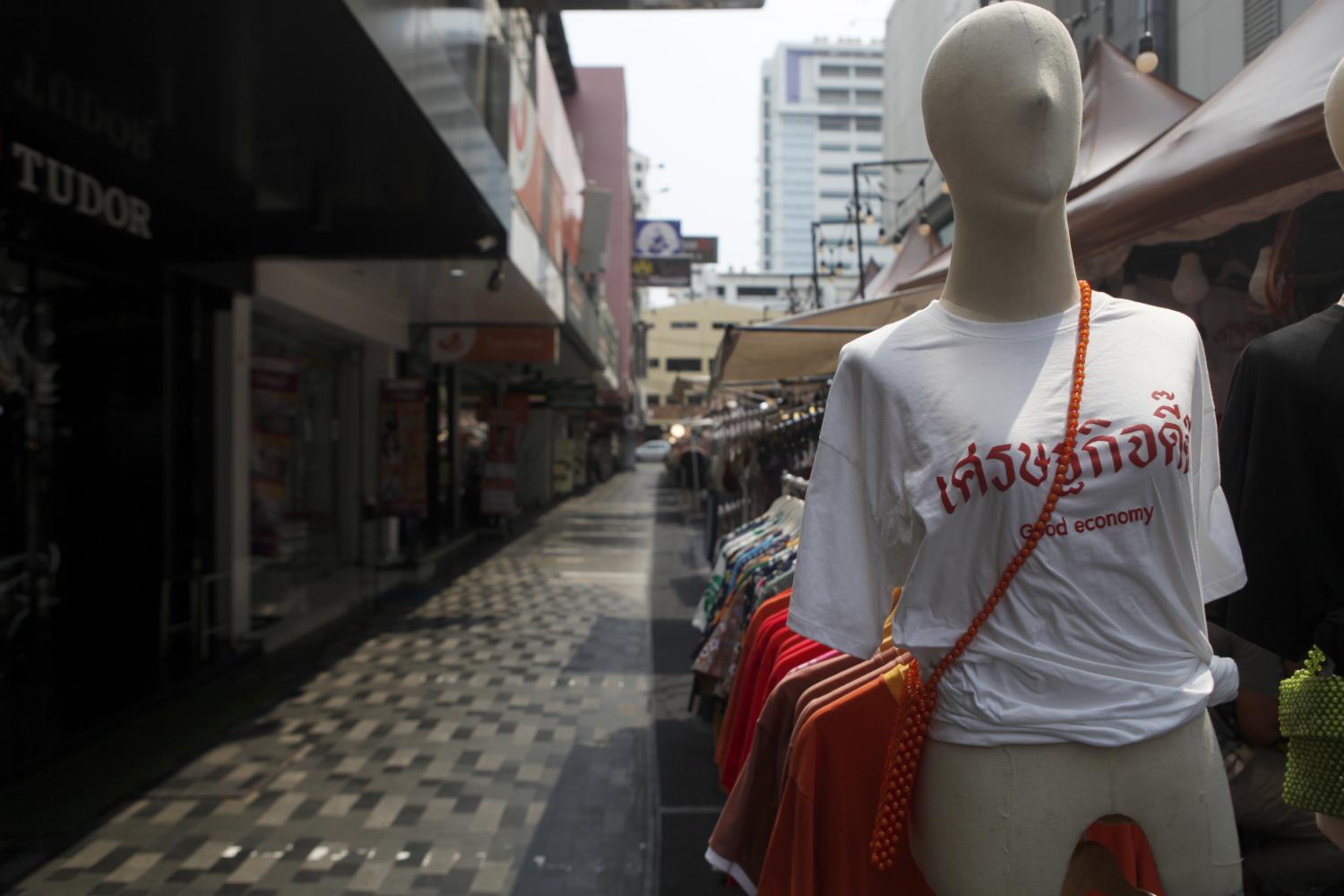
Picture this: Your name is "Mr Thai Economy", and you have contracted the coronavirus in late January. After a close examination in March, doctors (the Bank of Thailand) said your health is of deep concern as GDP growth could go as low as -5.3%.
But there is no need to panic: "We have a powerful drug called favipiravir, aka fiscal stimulus package, and we will give you a really big dose of the drug amounting to 1.9 trillion baht or 12% of GDP".
If that is not enough, "we [Bank of Thailand] are prepared to cut domestic interest rates to a level never seen before and allow debtors to temporarily halt loan payments".
With that kind of treatment, your health should steadily improve and, if you are lucky, you will be healed by June. Do not mind that you cannot afford that expensive drug, we will take out a really big loan of 1 trillion baht which your children will pay for in the decades to come.
Simple mathematics says that 12% of GDP spending on cash handouts, project investments and soft loans should bring negative GDP growth to a robust positive one. Why? Because -5.3 + 12.0 equals a plus 6.7. My seven-year-old nephew calculated that.
Okay. Ignore the effects of non-cash programmes like soft loans to SMEs and Bank of Thailand's (BoT) bond stabilisation fund. The cash handout and investment projects alone, which total 1 trillion baht, or 6.25% of GDP, should be sufficient to counter the effects of Covid-19. My nephew ran the number again. 6.25 - 5.3 = 0.95. Confirmed.
Wrong. Super wrong.
BoT -- despite 1 trillion baht of fiscal spending, lowering of interest rates to 0.50%, and allowing debtors to temporarily skip loan payments -- recently lowered its 2020 GDP growth projection to -8.1% from -5.3%.
Mind you, the projection is based on no second wave outbreak and an unlock down of economic activities. If things turn sour like a second wave of outbreak, GDP growth could easily take another nose dive.
With a much-worse-than-before economic outlook, the government and Bank of Thailand now face two possible options.
Option 1: Do nothing more and accept the fact the economy will suffer 8.1% contraction this year.
With that level of negative growth, we can expect an unemployment rate of 20% or more which means 7.5 million workers will be jobless; 20% or more businesses will face closures and bankruptcies; and 20% or more bad debts (NPLs) will surface.
In short, it will be a Great Depression-like economic atmosphere. The danger of letting the economy fall into a deep recession is the risk of the economy entering a vicious cycle it may never get out of. It might never get out of negative growth territory for many years to come because of domino effects: the bankruptcy of one business leads to the bankruptcy of more businesses.
This option might not sound nice, but it has two important merits. First, it keeps government debt to GDP below 60% as imposed by the Fiscal Discipline Act 2018. The Finance Ministry has calculated that the 1 trillion baht new debt would put the government debt level at 57.9% of GDP in the next fiscal year. No more room to borrow, unless you amend the act.
Second, it will not overly upset liquidity conditions in the money market. When the government borrows, it essentially takes cash out of private sector hands and causes all kinds of economic anomalies like crowding out and higher interest rates.
Crowding out occurs when banks and investors prefer to buy government bonds more than lending money to businesses. Many businesses would not be able to expand as they cannot obtain loans.
Option 2: Double or triple the stimulus package. When the 1 trillion baht package is not enough to stop GDP from falling, why not double that amount to 2 trillion baht or even triple to 3 trillion baht. If you follow the news, the Care group suggests the stimulus package should be increased by 2 trillion baht to provide loans to 1 million SMEs for 2 million baht each.
This will bring the total stimulus package to 3 trillion baht or 18.75% of GDP. The purpose of the additional package is to keep workers in that 1 million SMEs employed and give time for SMEs to adjust to the new normal.
I do not want to disappoint the Care group. During the Great Depression, Roosevelt spent 20% of GDP to pull the US economy out of depression without success. His New Deal programme was only able to lower the unemployment rate from 25% to 15%. And when the programme stopped in 1937, the unemployment rate jumped to 19%.
The Great Depression ended when the US entered World War II in 1941 as jobless workers were either drafted into the army or sent to work in weapons factories.
A stimulus package, regardless of its size, can only provide temporary relief. Once the money stops, the economy will fall again. A long-term structural strategy is needed.
John Maynard Keynes said the New Deal programme did not quite work because the budget was too small. If Roosevelt were to spend more, he could have ended the Great Depression.
Well, if 20% of GDP was not enough, how much was needed? Actually, I can guess. If 20% of GDP can reduce the unemployment rate by 10%, one would need another 20% of GDP to push down the unemployment rate to 5%. Therefore, 40% of GDP stimulus package is recommended for president Roosevelt.
Unfortunately, the president had no luxury to increase the package as the US was under the gold standard and money could not be printed at will like today.
On a TV programme, an anchor asked Jacques Attali, a noted French Economist, on how to deal with economic impact of the pandemic. He answered: "Get dogs. They cheer you up."
Maybe we should take up his advice and forget about economic relief packages.
